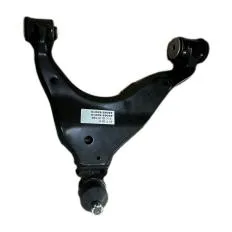
-
 Afrikaans
Afrikaans -
 Albanian
Albanian -
 Amharic
Amharic -
 Arabic
Arabic -
 Armenian
Armenian -
 Azerbaijani
Azerbaijani -
 Basque
Basque -
 Belarusian
Belarusian -
 Bengali
Bengali -
 Bosnian
Bosnian -
 Bulgarian
Bulgarian -
 Catalan
Catalan -
 Cebuano
Cebuano -
 Corsican
Corsican -
 Croatian
Croatian -
 Czech
Czech -
 Danish
Danish -
 Dutch
Dutch -
 English
English -
 Esperanto
Esperanto -
 Estonian
Estonian -
 Finnish
Finnish -
 French
French -
 Frisian
Frisian -
 Galician
Galician -
 Georgian
Georgian -
 German
German -
 Greek
Greek -
 Gujarati
Gujarati -
 Haitian Creole
Haitian Creole -
 hausa
hausa -
 hawaiian
hawaiian -
 Hebrew
Hebrew -
 Hindi
Hindi -
 Miao
Miao -
 Hungarian
Hungarian -
 Icelandic
Icelandic -
 igbo
igbo -
 Indonesian
Indonesian -
 irish
irish -
 Italian
Italian -
 Japanese
Japanese -
 Javanese
Javanese -
 Kannada
Kannada -
 kazakh
kazakh -
 Khmer
Khmer -
 Rwandese
Rwandese -
 Korean
Korean -
 Kurdish
Kurdish -
 Kyrgyz
Kyrgyz -
 Lao
Lao -
 Latin
Latin -
 Latvian
Latvian -
 Lithuanian
Lithuanian -
 Luxembourgish
Luxembourgish -
 Macedonian
Macedonian -
 Malgashi
Malgashi -
 Malay
Malay -
 Malayalam
Malayalam -
 Maltese
Maltese -
 Maori
Maori -
 Marathi
Marathi -
 Mongolian
Mongolian -
 Myanmar
Myanmar -
 Nepali
Nepali -
 Norwegian
Norwegian -
 Norwegian
Norwegian -
 Occitan
Occitan -
 Pashto
Pashto -
 Persian
Persian -
 Polish
Polish -
 Portuguese
Portuguese -
 Punjabi
Punjabi -
 Romanian
Romanian -
 Russian
Russian -
 Samoan
Samoan -
 Scottish Gaelic
Scottish Gaelic -
 Serbian
Serbian -
 Sesotho
Sesotho -
 Shona
Shona -
 Sindhi
Sindhi -
 Sinhala
Sinhala -
 Slovak
Slovak -
 Slovenian
Slovenian -
 Somali
Somali -
 Spanish
Spanish -
 Sundanese
Sundanese -
 Swahili
Swahili -
 Swedish
Swedish -
 Tagalog
Tagalog -
 Tajik
Tajik -
 Tamil
Tamil -
 Tatar
Tatar -
 Telugu
Telugu -
 Thai
Thai -
 Turkish
Turkish -
 Turkmen
Turkmen -
 Ukrainian
Ukrainian -
 Urdu
Urdu -
 Uighur
Uighur -
 Uzbek
Uzbek -
 Vietnamese
Vietnamese -
 Welsh
Welsh -
 Bantu
Bantu -
 Yiddish
Yiddish -
 Yoruba
Yoruba -
 Zulu
Zulu
Replacement Options for Left Side Lower Control Arm in Vehicles
Understanding the Importance of the Left Side Lower Control Arm
The left side lower control arm is an essential component in the suspension system of a vehicle, and it plays a crucial role in ensuring optimal handling, comfort, and safety while driving. This article explores the structure, function, and significance of the left side lower control arm, as well as common issues that may arise and the importance of regular maintenance.
Structure and Function
The control arm, also known as an A-arm, is typically shaped like the letter A or a triangular configuration. The left side lower control arm connects the chassis of the car to the wheel assembly on the left side, serving as a linkage that allows for controlled movement of the wheel as the vehicle encounters bumps and turns.
One of the primary functions of the left side lower control arm is to manage the camber angle of the wheel. Camber is the angle at which the tires make contact with the road; proper camber ensures even tire wear and optimal contact with the surface. Additionally, the control arm allows for up-and-down movement of the wheels, absorbing shocks and maintaining stability while driving.
Importance in Vehicle Handling
A well-functioning left side lower control arm directly influences the handling characteristics of a vehicle. When the control arm is in good condition, it provides better control during cornering, which enhances the vehicle's responsiveness and safety. Conversely, if the control arm becomes worn or damaged, it can lead to misalignment and affect the vehicle's handling. Drivers may experience increased tire wear, vibrations, and an overall decline in driving comfort, which can ultimately impact safety.
Common Issues
left side lower control arm

Over time, the left side lower control arm can be subjected to stress due to road conditions, driving habits, and environmental factors. Common issues include
1. Worn Bushings The control arm has rubber or polyurethane bushings that can wear out, leading to play in the suspension system and a decrease in handling performance. 2. Damaged Control Arm Accidents, potholes, or rough terrain can cause the control arm itself to bend or fracture, requiring immediate replacement.
3. Rust and Corrosion Vehicles that are frequently exposed to moisture, road salt, or corrosive elements may develop rust on the control arm, impacting its strength and integrity.
Maintenance and Replacement
Regular inspections of the suspension system, including the left side lower control arm, are crucial for identifying wear and tear before it leads to significant problems. Signs that the control arm may need attention include unusual noises from the suspension, uneven tire wear, or a noticeable change in the handling of the vehicle.
If a control arm replacement is necessary, it is best to seek professional assistance to ensure that the job is done correctly. A qualified mechanic will have the necessary tools and expertise to replace the left side lower control arm and properly align the vehicle, restoring its performance.
Conclusion
The left side lower control arm is a vital component in ensuring the safety and performance of a vehicle. Understanding its role and maintaining its functionality can prevent issues and enhance the driving experience. Regular inspections and prompt repairs are essential to ensure that this important suspension component continues to perform as intended. By being proactive about maintenance, drivers can enjoy improved handling, comfort, and safety on the road.







